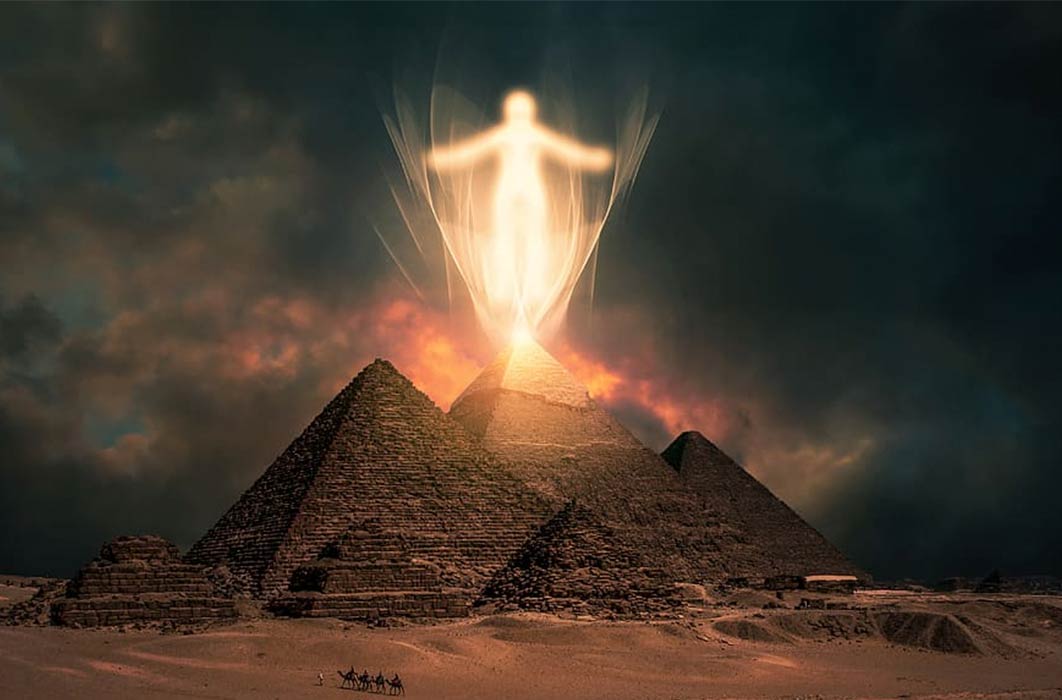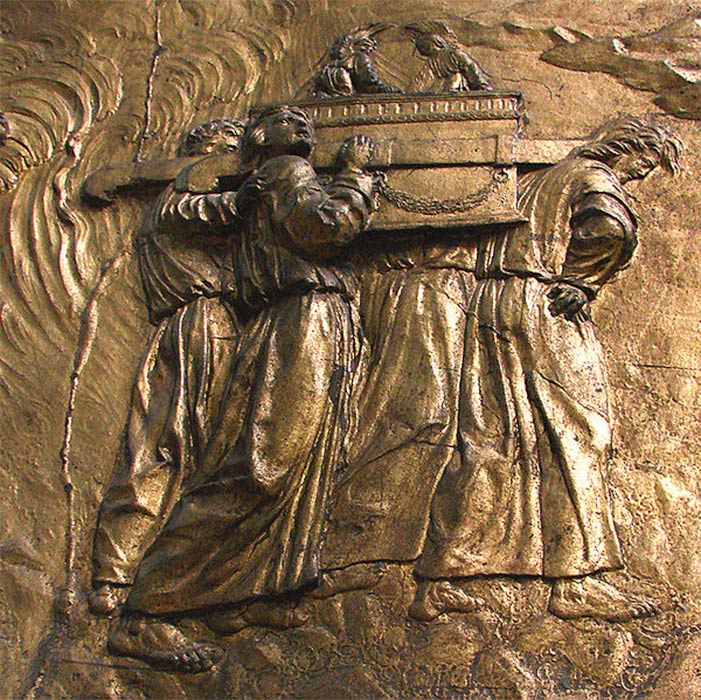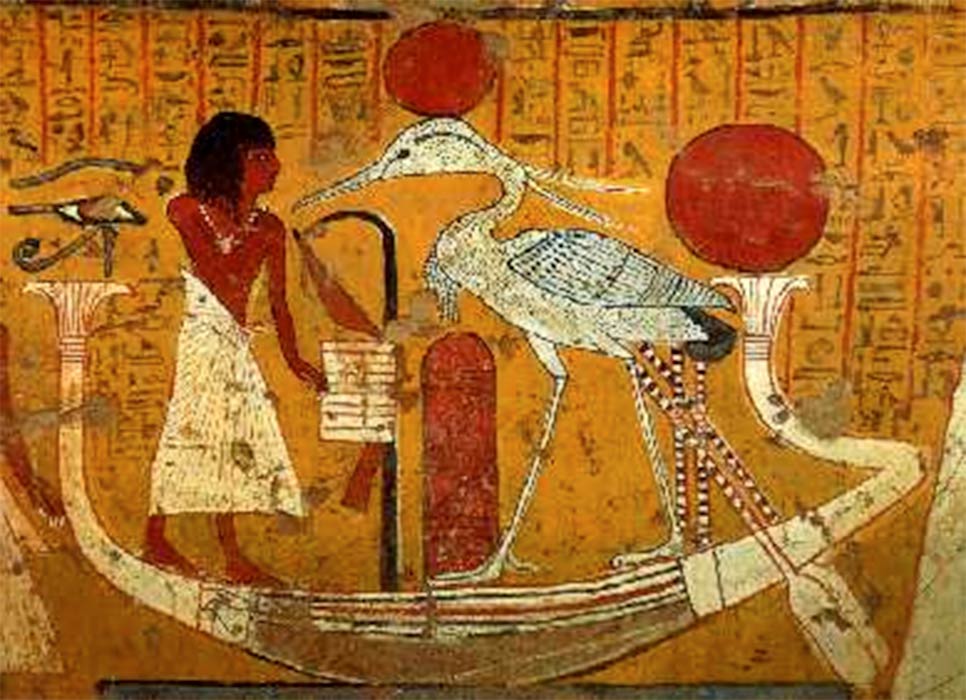
The Location of the Lost Ark: Mecca
Could the Ark of the Covenant be hidden in plain sight, where thousands of pilgrims congregate at a Holy Site, unaware of the significance that this may hold for world religions? A study of ancient Egyptian hieroglyphs, references to the probable original purpose of the pyramids and the symbolism of the winged disk, as well as a look at the ancient gods of Sumer and Egypt, may reveal the location of the lost Ark.
It would be quite hopeless for anyone to gear up to set out on an ‘Indiana Jones’ quest and adventure to unveil the Ark, for it is no doubt heavily guarded and the city wherein it is secreted away is itself under strict border control, admitting only such visitors who can answer questions that would tax the memory mind of a ‘Chaser’. The Keepers of the Ark this day may still be unaware that the Ark is not one of a kind, which should give new heart to those adventurers who want to be the one to unveil it once and for all.

Relief of Transport of the Ark of the Covenant at Auch Cathedral, France (Public Domain)
Gerald Massey (29 May 1828 – 29 October 1907) an English poet and writer on spiritualism and ancient Egypt, made several references in his 1907 book Ancient Egypt Light of the World to the Ark: “There had been various kinds and forms of the celestial or astronomical ark that was at first necessitated as the means of carriage for the gods, because the heavens had been imaged as the firmamental water… Child-Horus on his papyrus-reed was in the ark that saved him from the waters, as the sign was constellated in the planisphere of Denderah…The Pleiades formed an ark. Orion was the ark of the holy sahus, with Horus at the look-out…The ark of Taht was in the crescent moon that sailed the azure deep by night. A deluge was the modus operandi, and the ark the means of safety for the few. In space it was the ark of the four quarters. Hence also the four-square box that imaged the ark of Noë on the well-known Apamean coin…In Akar, or Amenta, it was the ark of Osiris; in earth the ark of Seb; in heaven the ark of Ra…Its mainmast was the pole. The nightlight on the masthead was the pole-star…In the myth it was the ark of Ra, the bark of millions of years. The Egyptian ark or ship of Nnu is the ark of heaven, or, conversely stated, the ark of heaven is the ship of Nnu; This is the same thing, only written out large and told as if it were a human history, whereas the original is mythological.”

Bennu bird from an Egyptian papyrus. (Public Domain)
Ancient And Modern References To The Ark
The Ark of the Covenant is but one of many names given it. In ancient Egypt alone it was called ‘The Celestial Chamber of God’, ‘The House of Ra’, ‘Bennu’ or ‘Phoenix’, ‘The Luminous Crown’, ‘Throne of Radiance, and ‘The Winged Disk of HAR’. The Sumerians named it ‘The Bright Serpent’. It is thought that some very ancient culture, long before the ancient Egyptians, built the Great Pyramid as a platform purely to accommodate the Ark, and so the huge blocks of stone had to slope downwards from the small flat top of the pyramid, at the same angle as did the Ark or Benben Capstone.
Some people may view the Ark as a space craft that once ferried a god to and from Earth. America has the Great Pyramid on the back of their One Dollar Note with the Ark just taking off or landing and this has the Eye of HAR/HRY, the Egyptian son of God also known as IUSA, on it. Tony Bushby in his ‘Secret in the Bible’ reproduced a sketch of a small stone pyramid that has the God Ra wearing a spacesuit standing in a hatchway. This he referenced from ‘When Time Began’ by Zecharia Sitchin, (1993). It would have been far better had Bushby informed where such a stone was to be found.
There is further doubt in Bushby’s book in the chapters prefaced ‘The Great Pyramid Robbery’ where he tells how the Sumerians led by King Gudea and Prince Ninagel took the Ark from the pyramid for the king’s new temple in his kingdom of Lagash. However, Bushby gives as his source the “Inscriptions of Gudea” and the Myths of Kur. The Inscriptions are easily found in the ‘Sacred Texts’ website and mainly itemize the building of Gudea’s temple and where the stones originated from. There is no mention of Egypt in the Inscriptions or the Sacred Texts’ page on the Myths of Kur, other than the land, ‘Mâgan’ which some think to have been in Sinai. Further on in this account he mentions ancient Egyptian texts that show that the Ark was returned to Egypt and the Great Pyramid.





